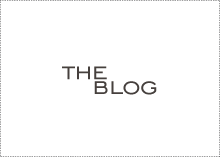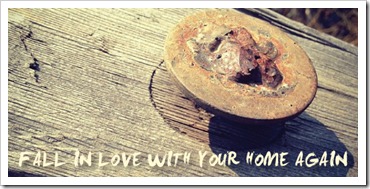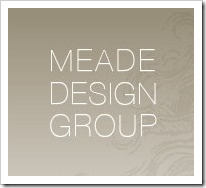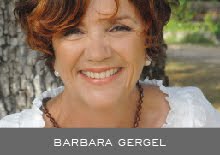As seen in SNAP, September 2012
As a multi-disciplinary designer, I always appreciate design that is not only well-thought out, but well-executed. I understand how much time goes into choosing the perfect solution for any kind of design project. What differentiates something from just being ordinary to being extraordinary? I would have to say that the answer is in the quality of the design; whether it’s interior design, graphic design, furniture design, industrial design, architecture or any other form of design.
Design is often intangible, until you can see and touch the end result, that is when you can see its real value. I see this value in our work every day, and I believe all of my colleagues take pride in what we do. We designers understand how design can be integrated into the larger picture and we can identify unsuccessful or poor design when we see it.
Design is neither art nor science. It is a sui generis competency.
The value or quality of a design can be measured quantitatively, there is always a cost involved in the design process and in any design decision, but these measures do not measure the quality of the design. The quality of the design is an individual process in which the recognition of the beautiful is identified on the basis of its mere appearance, prior to a more in-depth experience and verification of the entity’s functionality. This is the main reason why it is such a hard concept to grasp for clients in general. Clients see the quantitative aspect of the value of design while designers tend to see more the creativity aspect of the design. But, how do you explain these differences to a potential client? This is often a difficult topic to understand for somebody who is not part of our design industry, so I have asked some of the most influential designers locally and across Canada what their answer to this polemic question would be.
If you are curious to read what Canada’s most influential designers have to say on the topic, I invite you to read their thoughts:
WHAT IS THE VALUE OF DESIGN?

In James Joyce’s classic novel A Portrait of the Artist as a Young Man, his troubled young hero describes the role of art as “…a breakwater of order and elegance against the sordid tide of life …” The word “sordid” is a bit over the top. But life can be chaotic and stressful, and I think good design is one of those art forms that can help to provide some refuge from that. It can create beautiful and well ordered settings in which to lead our lives. Can - or should - design prevent life from being messy and unpredictable? Of course not. But can it help to make life at least seem a bit calmer and more manageable? Absolutely.
JAMES GAUER – Architect/Designer
--------------------------------------------------------

The value of design: When I hear from my clients any version of the phrase “You did exactly what I always wanted but couldn’t say…and better than I could have ever done it!” I think that nicely sums up the value of working with a professional.
LANA LOUNSBURY – Interior Designer
--------------------------------------------------------

This a wonderfully subjective question, perhaps answered in: "Beauty is in the eye of the beholder."
I believe the value of design is not only in the aesthetic we create but also in the function and livability of the environment that is unique to each client.
A space that adapts seamlessly to a user's needs, elevates the quality of one's life.
TERESA RYBACK – Interior Designer
--------------------------------------------------------

Design value depends on the designer and their relation to the client & the project. There is no fixed value of design & amateur designers lower the value of our brand whereas the best starchitects & fashion designers raise the value around the world. The answer therefore is "It depends..." an experienced, commited designer working with a sensitive client and an inspiring site...the value is priceless!
JC SCOTT – Interior Designer
--------------------------------------------------------

The value of design in many ways is like securing an investment. Let's face it - building a home or renovating comes with a large price tag and ensuring your decisions and selections are well thought out and calculated is crucial.
Selecting beautiful flooring and exquisite furnishings is what designers are known for - however a hidden skill that the best ones have - is reading the minds of their clients and leading them down a path that reveals their design vision while at the same time spending their money wisely.
Design magazines feature their monthly high/low articles and designers know when it makes sense to go high and when to go low. Don't out price your home in your neighbourhood by blowing the budget in every area of your project, but at the same time - don't cheap out on the bones and on things that will show wear and tear over the years. The best advice I give clients when the bills and quotes become overwhelming is to look at the items that seem to be too luxurious and not a necessity now, will be standard in 5 years. Be smart and know that you may not need these things now, but in a few years if you need to sell your home the buyers are going to be expecting it. For example( IPods and IPads in the wall and all the smart home technology are always changing) .
Great design is all about beautiful interiors, however a designer that has great instincts and knowledge when it comes to spending your money is priceless!
ATMOSPHERE INTERIOR DESIGN
--------------------------------------------------------

Design is a three dimensional and organic process where the journey results in a finished product. That journey, or what some artists call the messy stuff, is what is required before the final product and the beauty of that project can be seen. Like any new concept the environment, or location or function of what is being designed has to be acknowledged. For me that means garden, house, location, and the most importantly the people involved all work together to create the object of beauty. That is three dimensional to me, when all the elements work together.
BARBARA GERGEL – Designer/Master Gardener
--------------------------------------------------------

The value of design comes from the fact that design is considered.
Whether designing a piece of furniture, an interior or a home, every detail should be thought through so that the end result best suits its intended use.
Working with an expert in any field may cost more initially, but the long term savings can not be measured.
Think about all of the items that you come in contact with on a daily basis. Do they give you some pleasure?
That, is good design and no matter what the price, that is great value.
ROSS TAYLOR – Gabriel Ross / grshop.com
--------------------------------------------------------

Excellent question. The true value of our work - or the return on the investment if you will - is always this: The client's enjoyment of their home. It's a function of beautiful aesthetics, appealing atmosphere and the ease that comes from living in a well-designed environment.
KIMBERLY SELDON – Interior Designer
--------------------------------------------------------

What a designer does for your home:
- creates aesthetically pleasing environment
- creates functionality for end user
- sources unique products not available to public
- properly space plans for ease of use and comfort
- sources specific products for special applications (ie. Non-slip flooring, stair treatments, custom window treatments)
What a designer does for the client:
- maintain budget and time frame
- offer solutions/ suggestions that most people wouldn’t think of (storage/ organizational solutions; interesting/ creative / unique ideas)
- speak on behalf of the client to contractor/ architect/ etc
- organize and coordinate contractor/ trades
- helps their vision become a reality
- becomes a mediator between husband and wife!!
LINDSAY SMART & CAROLYNNE HAUSER – Interior Designers at KWI
--------------------------------------------------------

Upfront design fees are often minimal in relation to the cost of any construction or renovation project, but can save clients from making costly errors, running over budget or schedule, or worse ending up with a space they don't love.
A professional interior designer has the experience and expertise to make the process painless, easy and exciting, and can provide a fresh perspective beyond what most clients could have ever imagined possible. The real value lies in a finished space that fits your home or workplace better than your favourite pair of jeans.
KYLA BIDGOOD – Interior Designer
--------------------------------------------------------

We are surrounded by design in our everyday environment, from the products we use to the spaces in which we interact.
I believe that good design is thoughtful, has purpose, solves a problem, or satisfies a need.
Design is a very valuable tool. It gives the client an opportunity to visualize different solutions with associated impacts on schedule, budget, and aesthetics. It also helps to identify potential issues before they arise, which can be costly to change during the construction process.
TAMARA BUSH – Interior Designer
--------------------------------------------------------

The value of design. I first think of the thought process that goes into design. I value the research and development behind a design, the man hours and precision that went into designing a piece, rather than say, just having anyone pump out a generic design. For example with a chair - someone went through multiple prototypes to get the ergonomics *just* right, I value that quite a bit.
In fact I always think about the value of design in my everyday life. I appreciate the value of the function (as in the case of a comfortable sofa/chair, a great stain resistant fabric) but the value in the form of a piece is something we can take for granted. Some human designer took the time to evaluate the proportions of that object or designed room, carefully choosing a colour palette that fits the clients needs or is pleasing to the eye - gosh that is something we take for granted but is full of latent value!
Perhaps design is undervalued because it's difficult to directly measure it's impact. In a graphic design sense people certainly associate the quality of the brand/company with the quality of the design - and that, to me as a Realtor is certainly a valuable asset to my company!
Design is a beautiful vehicle that has the power to tap into an emotional potency of products and services while also creating layered textural experiences in our lives.
CHRISTINA STACK – Real Estate Agent / Co-owner Only Human
--------------------------------------------------------

The value of design is defined by the ability of the designer to create a personalized space for its inhabitants. I well designed space will maximize real estate while providing an efficient space that is comfortable and non-toxic.
AMANDA FORREST - Interior Designer
--------------------------------------------------------

"Design" is the invisible hand in the room. People often think "design" is what you see, when in fact it's just the opposite. Good design works behind the scenes to address principles of balance, symmetry, proportion, flow, function, rhythm and harmony in such a way that the room not only looks beautiful, but feels comfortable at the deepest level: a place where you can truly relax and create the most important moments of your life.
The value of design? Priceless!
SUSAN HARGRAVES – Residential Stylist
--------------------------------------------------------

The value in design is in the designers expertise and experience. Its not just a matter of aesthetics....its about using the budget wisely and speaking the same language as contractors and the trades to avoid confusion. Typically a designer will save you money...where most think the opposite.
MICHELLE MORELAN – Interior Designer
--------------------------------------------------------

Originally, solving a problem!
Design, for many years was strictly about function. How do you get A to work with B? You must design it in a certain manner so they can relate and connect.
I believe the idea evolved and grew, like many ideas, from something very intellectual into something more emotional. And, over the years I believe it has become essential.
In many places around the world, and from my experience, especially in Europe, everything is designed! Down to the most mundane item. You will see a touch of thoughtfulness and attention put into everything. And, sometimes the best designs are the ones you don't even notice because they are so seamless and natural. For example, opening a door, an act we perform every day. When we open a door that has a nice handle, we may not even notice the ease of turning the hardware, the sensation of feeling the smooth material and the simple act just happens, smoothly, effortlessly. But when you are faced with hardware that is awkward and rough or not very ergonomic, you notice it right away and that is when you think "who designed this!?".
Every day design should bring happiness to whom ever experiences it. It should be calming and reassuring and evoke an emotion that pleases the user. And that to me is the ultimate value in design, knowing that what you have designed solves a problem in the most efficient and pleasing way.
Beauty in design is a combination of many things and when all elements come together, that is when everyone can appreciate the value of good design.
ANTONIETA D’INTRONO – Interior Designer
--------------------------------------------------------

"Value" is a subjective thing. It is really only quantified once a consensus of opinion is attached to it, and often this is driven by critical analysis, popular opinion, and down the line...economics. Google for instance, measures the value of a website, based on how much traffic it gets, and how many people are talking about the site through social media. The content might be horrible, but if its kept fresh (this gets into the area of context), and meets certain ethical criteria, in the eyes of a search engine the site has value since there are lots of people interested in it, and therefore that interest can translate to advertisement dollars.
The art world isn't so different. When people are interested in a work of art, it is often because it has been made to be interesting by critical analysis from gallery owners, art critics or historians, professionals of the art world that are visually literate and credible, and brought before the public to be "developed" into a valuable work of art. The value of the art in a sense has been designed. Historically this was dependant upon technique and craft, which was "mastered" by the artist. Now art is measured on a mixture of criteria with conceptual merit ranking higher than craft, and the level of interest a work can build in global public consciousness. So the criteria has changed, because the context has changed. "Value" is largely context dependant.
Design in my opinion is not different in how it establishes value in the public eye, but how it is different is that its also a mechanism for creating and establishing value. Design can be both an end product—an object, environment, or experience that's designed and has value either materially, or conceptually or both—and a process that takes an idea that's intangible and creates a physical or digital thing that is usable by people in an optimal way. The latter type of design, is a mechanism for building value. The degree of value is dependant on context and how integrated the design process is in developing solutions to problems.
To list some ways that design brings value to people:
- design brings a level of consciousness to a problem, or the problem of making an idea real.
- design offers tangible, provable, and repeatable processes for developing ideas, that can be measured and made better over time.
- design offers established, and vetted approaches to developing ideas, that ensure a range of results, and one of those results is almost always to add value to the materialization of an idea, system, environment or product that either doesn't exist yet, or has become obsolete, dated, or otherwise fallen out of context. Results like desirability, functionality, usability, cost-efficiency...etc, are value types.
- design also offers processes for the exploration of the human mind, a mixture of creative, intuitive, associative thinking and logical pragmatic problem solving. It bridges the gap between these types of thinking, and offers unforeseeable results (unforeseeable value) to problem solving.
CHRIS RYAN – Industrial Designer
--------------------------------------------------------

“What is the value of design? Such a small question, with very deep-rooted implications. What is the value of having an advocate, someone who truly has your best interests – personal and professional – in mind? What is the value of honesty? What is the value of insight? What is the value of forming long term relationships? What is the value of cooperation and transparency?
A designer – be it interior, graphic, fashion or industrial – is, or at least should be, committed to actualizing solutions to their clients’ needs, even if the clients have not yet articulated those needs. The cost of design varies, project to project and designer to designer, but the value of design is intrinsic in the relationship that is built. “
ANN FERGUSON – Interior Designer
MEADE DESIGN GROUP - THE BLOG. Copyright 2007-2011





























































































































































